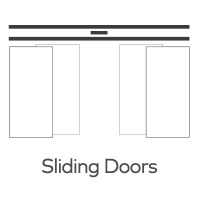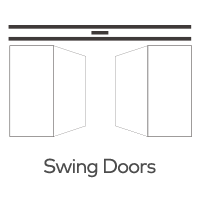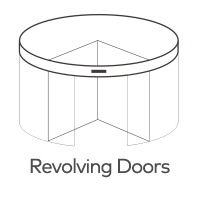How do you troubleshoot issues with safety sensors on automatic doors?
Safety sensors on automatic doors are essential for ensuring the safe operation of the doors, preventing them from closing on people or objects. However, these sensors can sometimes malfunction, leading to operational issues or safety risks. Troubleshooting these problems promptly is crucial. This article provides a step-by-step guide on how to troubleshoot common issues with safety sensors on automatic doors.

1. Check for Obstructions
Inspect for Debris
Safety sensors can be blocked by dirt, dust, spider webs, or other debris. Check the sensor lenses and the area around them. Clean them gently with a soft cloth to remove any obstructions.
Clear Pathway
Ensure that there are no objects in the path of the sensors that might be causing them to trigger falsely. Remove any items that might be interfering with the sensor’s line of sight.
2. Verify Alignment
Sensor Alignment
Sensors must be correctly aligned to function properly. Check that the sensors on either side of the door are directly facing each other. Misalignment can prevent the sensors from detecting each other, causing the door to malfunction.
Adjust Alignment
If the sensors are not aligned, adjust them manually. Most sensors have a bracket or a mount that allows for adjustment. Ensure they are level and facing each other directly.
3. Test Sensor Functionality
Manual Test
Place an object in the path of the sensor and observe the door’s reaction. The door should stop closing and either remain open or reverse its direction. If the door does not respond correctly, there may be an issue with the sensor.
Sensor Light Indicators
Most sensors have LED indicators. When functioning correctly, these LEDs typically show a steady light when the path is clear and blink when an object is detected. If the lights are not functioning as expected, this can indicate a problem.
4. Inspect Wiring and Connections
Check Connections
Inspect the wiring and connections to ensure they are secure and not damaged. Loose or frayed wires can cause the sensors to malfunction.
Secure Loose Wires
Tighten any loose connections and repair or replace any damaged wires. Make sure that all connections are secure and free from corrosion.
5. Evaluate Power Supply
Power Check
Ensure that the sensors are receiving power. Check the power supply and any related fuses or circuit breakers. If the sensors are not powered, they will not function.
Reset Power
Sometimes, resetting the power can resolve sensor issues. Turn off the power supply to the sensors for a few seconds and then turn it back on.
6. Test Sensitivity Settings
Adjust Sensitivity
Sensors have sensitivity settings that determine how easily they detect objects. If the sensitivity is set too low, the sensors might not detect obstacles correctly. Refer to the manufacturer’s instructions to adjust the sensitivity settings appropriately.
Recalibrate Sensors
Some sensors may need recalibration. Follow the manufacturer’s guidelines to recalibrate the sensors to ensure they function correctly.
7. Perform a System Reset
Reset Procedure
Performing a system reset can sometimes resolve sensor issues. Refer to the user manual for the specific reset procedure for your automatic door system. This often involves turning off the system, waiting a few minutes, and then turning it back on.
Check System Logs
Some advanced systems have diagnostic logs that can indicate what might be wrong. Check these logs if available to identify specific issues.
8. Professional Inspection
Call a Technician
If troubleshooting steps do not resolve the issue, it may be necessary to call a professional technician. They can perform a more thorough inspection and diagnose problems that might not be apparent.
Regular Maintenance
Schedule regular maintenance checks with a professional to ensure all components, including safety sensors, are functioning correctly. Preventative maintenance can help avoid unexpected failures.
Conclusion
Troubleshooting safety sensor issues on automatic doors involves a systematic approach: checking for obstructions, verifying alignment, testing functionality, inspecting wiring, evaluating the power supply, adjusting sensitivity settings, and performing a system reset. Regular maintenance and professional inspections are also crucial in maintaining the proper function of safety sensors. By following these steps, you can ensure the safe and reliable operation of your automatic doors, preventing accidents and ensuring the safety of all users.







